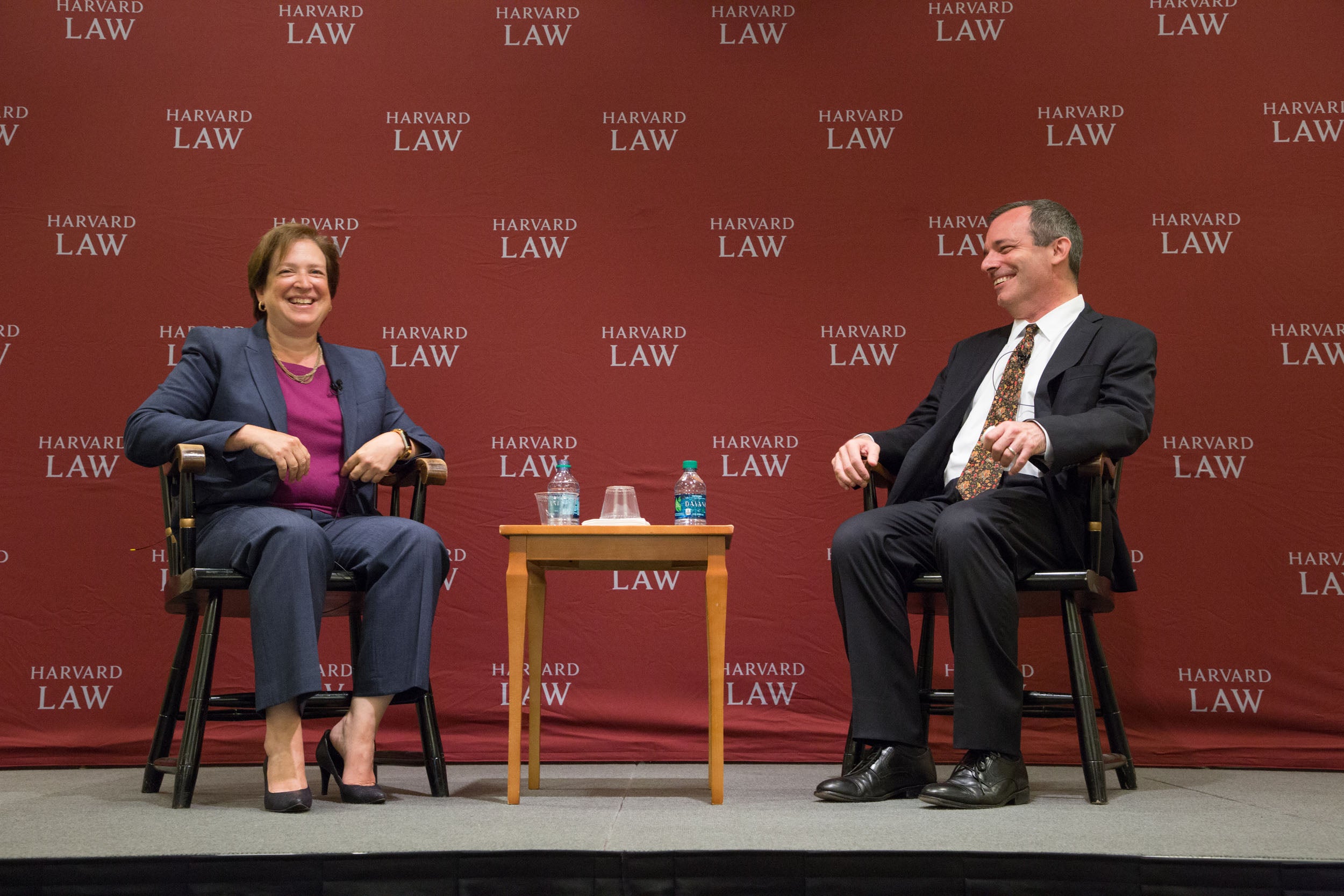Associate Justice of the U.S. Supreme Court and former Harvard Law School Dean Elena Kagan ’86 joined the newest dean of Harvard Law School John Manning ’85 for a discussion and a Q&A with HLS students on Aug. 31.
Kagan, who served as dean from 2003 to 2009, has returned to Harvard Law School for the past several years to lead a fall HLS reading group focused on the previous year’s Supreme Court term. She has also participated in an annual student orientation event to discuss her career and offer advice to incoming students.
Prior to her HLS deanship, Kagan served as solicitor general of the United States and she was a lawyer in the Clinton White House. When asked about her current position, she said her “gig” at the Supreme Court is her dream job. “I love thinking about law. I love thinking about real hard legal issues. I love reading and writing about law,” she said. “If you love all those things, it’s kind of the ‘dream’ job.”
When Manning asked about disagreement among the Justices, Kagan said that while there are a number of high profile, 5-4 decision cases, for the majority of the time, the Justices agree: “About 50 percent of our cases, sometimes even a little bit more, are decided unanimously, which is kind of an amazing thing because they’re by definition cases other courts have split on and not been able to come to a single right answer,” she said.
When asked if oral argument matters, Kagan responded: “I think oral argument does matter, although it’s not the thing that matters most,” she said. “If you’re going to have to choose between having a great brief and making a great oral argument, you should always choose to write the great brief. That’s where the justices really learn about a case and in the course of reading briefs, that’s where you’re thinking through the issues the most. By the time you read the briefs, you have some sense of how you think the outcome should go.”
According to Kagan, the first time the justices come together for a particular case is at oral argument. By the time they meet again at conference, it is time to vote on the case, which each justice votes on in seniority order. As the last or now second to last justice to vote, she said she found that there is little opportunity at the second conference to persuade other justices. “A very good way to get your colleagues to see things the way you see them, is to tip off your colleagues at oral argument as to which way you’re leaning and why.”
When Manning asked about her writing style and the conversational tone of her opinions, Kagan said she draws on her experience as a professor preparing class presentations. She said she puts in a tremendous amount of time, using understandable language and analogies that stick in people’s heads, to make her position clear. “I can stare at the same paragraph for hours at a time. I can stare at the same sentence for hours at a time,” she said. “It’s takes time. It takes work to get a final product that looks as though it has all just flowed from your pen.”
In 2009, President Barack Obama ’91 appointed Kagan solicitor general of the United States, and the following year, in 2010, he nominated her to the Supreme Court. She is the fourth woman to sit on the nation’s high court.
